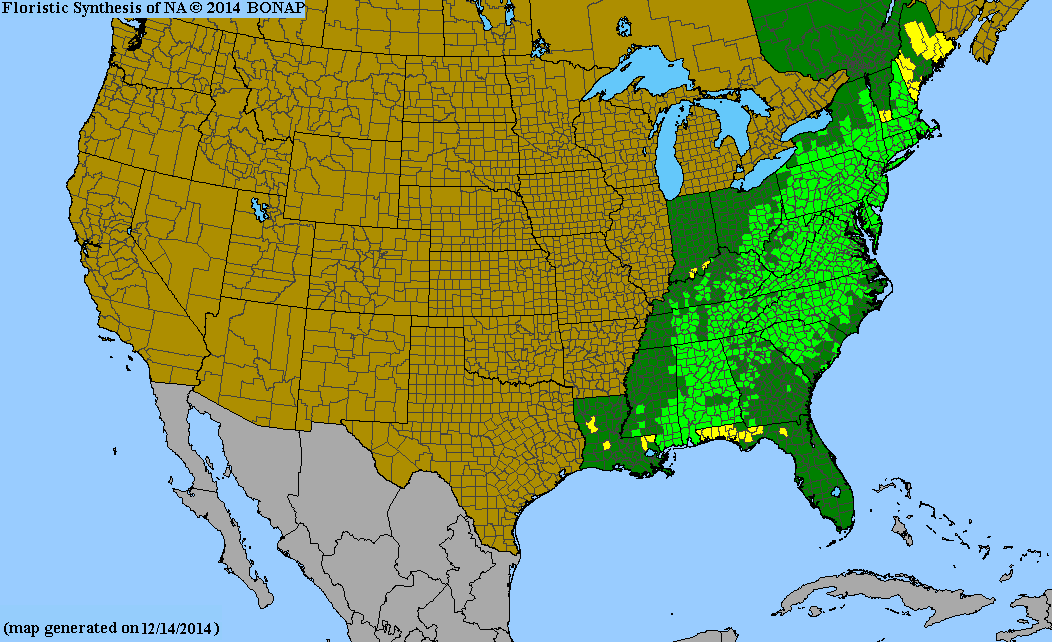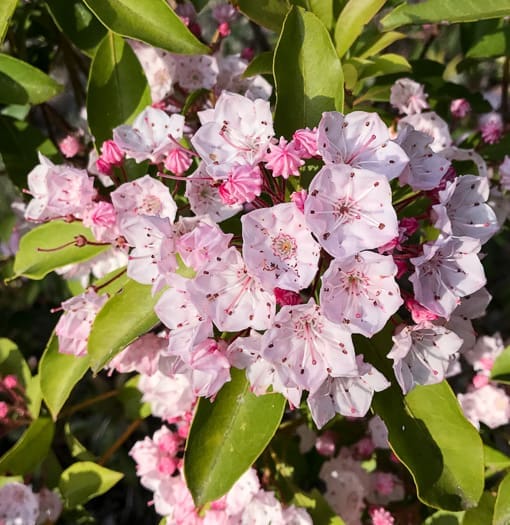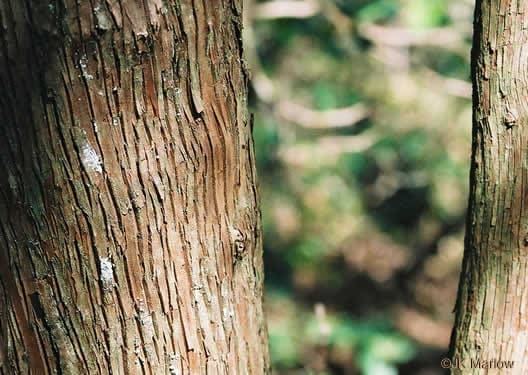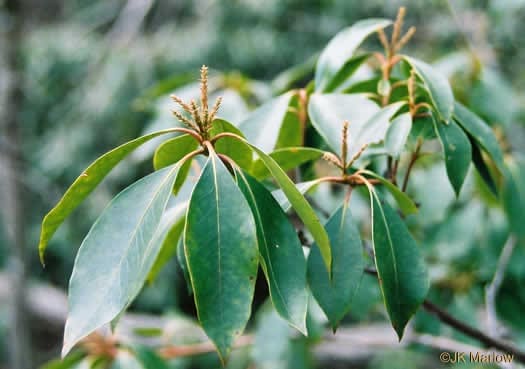Ericaceae
mountain laurel
Kalmia latifolia
Synonyms
Chamaedaphne latifolia
Other Common Names
calico bush, laurel, sheepkill
Plant Type
Shrub (less than 10 ft)
Life Cycle
Perennial
Typical Size
5-15 ft. tall
5-15 ft. wide
Tolerant of
Drought
Inolerant of
Poorly Drained Soil, Direct Afternoon Sun
Propagation
By seed, By cutting
Plant Propagation Notes
Take softwood, stem tip cuttings in fall from plants that are 2-3 years old. Seeds can be collected in the fall and require cold moist stratification for 90 days. Optimal temperature for germination is 74 degrees F and can take up to 6 weeks.
Plant Planting Notes
Mulching helps provide the cool moist environment the root systems prefer.
Plants/Diseases
Some susceptibility to leaf spot/blights, leaf borers, scale, and white fly.
Wildlife Benefits
Nectar/pollen source for pollinating insects, Nectar source for hummingbirds
Leaves
Leaves alternate or whorled along toward the ends of branches. Leaf blades are elliptic to elliptic-lanceolate with entire margins and smooth upper and lower surfaces.
Flowers
Showy white to pink flowers in clusters. Petals fused to form a saucer shape. Stamens are stuck in small pockets within the petals and release when triggered by pollinator visitors.
Fruit
The brown capsules develop in the fall and persist through winter.
Bark
Smooth, thin dark red-brown bark shreds and splits vertically.
Toxicity
All parts of the plant are toxic to mammals and should not be ingested.

USDA Hardiness Zones
4, 5, 6, 7, 8, 9
Light Exposure
Part Sun/Shade, Full Shade
Soil Moisture
Medium, Moist
Soil Drainage
Well-drained
Soil pH
Acidic (less than 6.0)
Native in South Carolina?
Yes
Plant Native Habitat
Acidic forest, bluffs, bogs, and along sandhill streams.
Global Conservation Status (NatureServe)
Secure (G5)
Federal Conservation Status (USFWS)
Not Listed
Distribution Notes
Very common in mountainous regions, but less so in the lower Piedmont and Coastal Plain.



